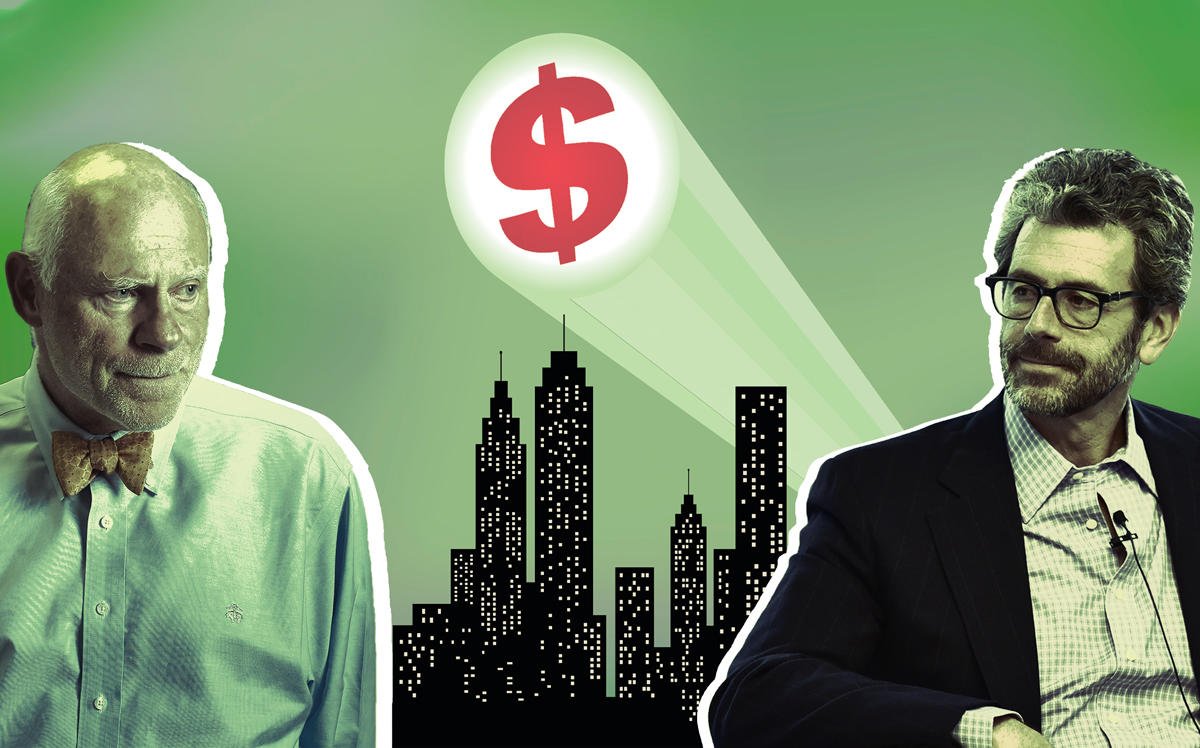Trending
Going green has some city landlords seeing red
While the goals may be good, property owners say there are other ways to cut carbon emissions

All stick, no carrots.
That’s how some in the real estate industry — or at least several building owners — are interpreting New York City’s recent adoption of lower greenhouse-gas emissions standards on properties larger than 25,000 square feet and the imposition of potentially hefty penalties for those who don’t retrofit their properties in time.
Real estate plays a significant role in the city’s greenhouse gas emissions. In 2015, New York’s buildings were responsible for 67 percent of emissions across the metropolis, according to a city government report from 2017.
While many in the industry believe the city’s new goal to cut 40 percent of building emissions by 2030 is laudable, they also criticized the seemingly tight turnaround for compliance and the threat of fines. Some of those business owners and developers told The Real Deal they are already attuned to the needs of improving the efficiencies of their properties for competitive and economic purposes. The legislation, which sets a preliminary deadline of 2024 for the worst-performing buildings, already is projected to cost upwards of $4 billion, The New York Times reported.
“This is a challenging piece of legislation… A lot of rules have been issued, but not enough that you can knowingly and confidently make an investment,” said Anthony Malkin, chairman and CEO of Empire State Realty Trust, owner of the Empire State Building.
Some of the city’s more iconic buildings will feel the impact of the emissions standards law, part of a package of green bills called the Climate Mobilization Act that were adopted by the city council ahead of Earth Day and are currently awaiting the mayor’s signature.

The Empire State Building at 20 West 34th Street
In that category is Malkin’s Empire State Building, which already has undergone a retrofit to boost the landmark property’s energy efficiency. Malkin said his firm, ESRT, is already working to improve the energy efficiency of the spaces that tenants occupy across its portfolio.
“There’s no question that to reach the standards that are set by the end of the 2020s, we’ll have to do more work,” Malkin said. “By the way, we’re doing more work all the time.”
Penalty pushback
Even for the lesser-known buildings that fill in the New York skyline — such as a decades-old residential complex — a major overhaul to comply with the city’s new standards can be daunting.
“It’s very difficult to enhance those types of assets without a meaningful capital improvement, essentially a reclad or an overclad,” said Walter Hartnett, vice president at engineering and consulting firm Thornton Tomasetti. “And at that point there’s large costs.”
The Real Estate Board of New York has already come out swinging against the new “green deal,” noting in its statement after the city council’s approval that the legislation focuses on only half of New York’s building stock and “does not take a comprehensive, city-wide approach needed to solve this complex issue.”
The council has worked on the bill for years and received input from a range of real estate players who would be affected by it. The council even moved the initial deadline back two years due to feedback from stakeholders, said its spokesperson Juan Soto. And achieving the city’s green goals by 2030 isn’t a figure plucked out of thin air — the council believes it’s necessary to lessen the impacts of climate change, said Soto, who noted that the fines are calculated based on the costs of retrofitting a building. (Penalties in the new legislation price out to the difference between a building’s emissions limit for the year and its actual output, multiplied by $268.)
While politicians have cited public support in favor of reducing greenhouse gases, some real estate professionals find the fines to be a tough pill to swallow.
“It’s one thing to create a tax to incentivize compliance, but it’s a different thing to create something that… effectively would bankrupt what would be a relatively small co-op,” said Time Equities chairman and CEO Francis Greenburger, New York’s “King of Co-ops.”
And such fines may be unavoidable if a landlord can do nothing else to improve efficiency — or finds it’s not financially feasible to do so.
A lot comes down to how buildings are ultimately used, said Rudin Management chief operating officer John Gilbert. The family-run real estate firm has a sustainability department that works to improve Rudin’s carbon emissions. An office tenant with many employees using a lot of technology will often generate much more electricity, for example, than an empty building.
“Everybody is just waking up to realizing that these are multimillion-dollar penalties, and they’re penalties that you cannot overhaul your way out of,” Gilbert said. “The only way that you can solve this is by procuring green energy. It’s going to be expensive, it’s going to be difficult and it’s going to take time.”
Fines imposed by the city could have other impacts, including investors penciling costs into prospective deals.
“It might not be today, but as people start to get smart about this legislation and the impact that it will have on the bottom line of the building, then I don’t see how investors would not ask for some sort of reduced price to try and account for that ongoing fine or increased cost, if you’re purchasing renewable energy,” said Rudin senior vice president Michael Rudin.
Nuveen Real Estate, the real estate division of New York-based pension giant TIAA, will be investigating buildings’ greenhouse gas emissions and the impact of any fines come 2024 — the first deadline imposed by the Climate Mobilization Act — when going through its financial due diligence, said Meghan Johnson, an associate for real estate sustainability at Nuveen, in an emailed statement.
Johnson noted that Nuveen is already doing this elsewhere around the world. The U.K., for example, has minimum energy efficiency standards that prohibit landlords from renting spaces that don’t meet those benchmarks.
“Given our commitment to sustainability as a firm, we would not be comfortable in the long-run financing property owners that are just shelling out these fines without making any plans for improvements,” said Nuveen’s Johnson.
And paying fines year after year — even if cost-effective in the short-term — is a “zero-sum game,” added Rudin’s Gilbert. “That will eat up your entire cash flow and you will not be able to either continue to run that building, to sell it [or] refinance it. That’s a dead end,” he said.
Offering incentives
In response to a question about what the proceeds from such fines will be spent on, Soto, the council’s spokesperson, said the city will work with building owners to ensure compliance and that ideally no penalties will have to be levied. Soto noted that the legislation itself includes an incentive in the city’s Property Assessed Clean Energy guidelines, which allow building owners to access low-interest loans financed by the cost savings stemming from renewable energy and energy-efficiency projects.
Despite the adverse reactions to pollution punishments, there is an acknowledgement from some quarters that measures are needed to reduce emissions from the city’s many structures.
“The good thing about this bill is that it’s not just about new buildings. It’s retrofitting all the existing buildings, which has not gotten a lot of attention,” said Benjamin Prosky, executive director of the New York chapter for the American Institute of Architects.
Prosky noted that many New Yorkers can attest to the experience of being inside a piping-hot apartment or office building that relies upon steam heat to combat freezing temperatures outside.
“These are the things that are contributing to the carbon emissions that New York City has and it’s really not sustainable,” Prosky said. “It’s also economically very wasteful.”
And while the city has enacted other laws in recent years to drive down its carbon footprint — like requiring energy audits — change has been too slow, said Casey Cullen-Woods, a sustainability project director at Thornton Tomasetti. “Certainly it’s going to be a project-by-project response… as a sustainability practice we’re very excited to see clients respond to this and we think it’s achievable,” she said.
Malkin agreed that the city’s move to adopt the new legislation shows how other efforts to improve energy efficiency — like building to LEED standards, for example — have failed to move the needle on its carbon-cutting goals. “We’ve got a lot of LEED platinum [certified] buildings, which are energy pigs,” he said.
Others pointed to the fact that the city’s green initiative carves out exemptions for public housing and hospitals. Soto, speaking on behalf of the council, said that facilities run by the city itself are supposed to curb 40 percent of their emissions by 2030 and achieve an 80 percent reduction by 2050.
If the city finds that meeting those goals is not possible, then a report to the council must detail what needs to be done to reach those objectives, Soto said. Hospitals, because they provide a critical service, can either cut emissions to what the legislation lays out or slash them by a lesser amount ahead of each legislative deadline.
“If this really was, in its purest sense, a collective goal, it would include those properties, too,” said Thornton Tomasetti’s Hartnett about city-owned buildings.
The question currently on the minds of many, including the legislation’s supporters, is how to make its mandated changes possible in a manner that works for all parties.
“We can’t pass on these costs to tenants that are already struggling,” Prosky said. “What will be done to make incentives that will be cost-effective?”
Until those specifications are ironed out, the industry has to wait. Greenburger, the veteran Time Equities developer, knows what has to come first.
“The devil is in the details,” he said.




